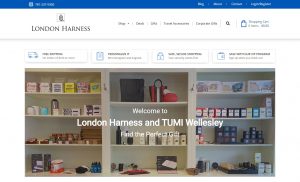In the early days of search engines – essentially until 2005 – optimization for highly desirable two or three word keyphrases was relatively easy. The right on page content, meta tags, and as many inbound links as you could obtain from link farms did the trick. Those days are long gone, not only because of the gradual evolution of Google’s algorithm, but because of the increased importance of search traffic from other sources like Facebook that add additional dimensions to SEO to their search by utilizing the social graph.
The greatest impact on SEO, however, has been other firms and practitioners of SEO gradually increasing competition for the prime 1st page of results in Google. For many search terms like “auto insurance” or “mortgage refinance,” obtaining this position – even locally – is virtually impossible. Existing occupants of the top slots already have such an entrenched position because of domain and page age, as well as years of content creation and link building.
Fortunately for startups and small firms, this situation has created a new opportunity through the years – targeting what is known as medium and long tail keyphrases. A medium tail keyphrase typically is three to six words long and may includes a highly desirable keyword along with more specific adjectives or descriptors. For example, a mortgage finance company focused on optimizing its website for a highly competitive search term such as “mortgage refinance,” which it will likely never rank well for without massive investment in search marketing, could instead optimize web pages in its site for focused keyphrases that align with specific products, its location or other attributes like “no points condo mortgage refinance” or “honest Boston MA mortgage finance,” or “new hampshire vacation second home mortgage refinance.”
An example of this approach includes London Harness, a local travel and gift store in Wellesley, MA. Polar Design retooled London Harness’ website and enhanced its SEO in 2019, which paid dividends throughout 2020 (especially when in-store shopping was curtailed due to the covid19 pandemic).
We focused our optimization on individual blog and product posts, emphasizing medium tail keywords. Our approach did not include any additional content other than the client’s ongoing blog posting. Neither did we engage in link building. The chart below shows the increased ranking of a particularly profitable medium tail keyword associated with a popular brand of handbags.
The increase is attributable to the laser focus on a particular term which relates tightly to page content, keywords and anchor text for inbound internal links. Since each blog post and product can be optimized, this impact for a particular keyphrase occurred for pages throughout the website for scores of high value medium tail keyphrases.
SEO focused on medium tail keywords assists new or redesigned websites with a decent amount of pages and content to achieve respectable rankings in search engines that drive high quality traffic. In some cases, a single pass at optimization is sufficient to see good results and realize a quick return on investment.



